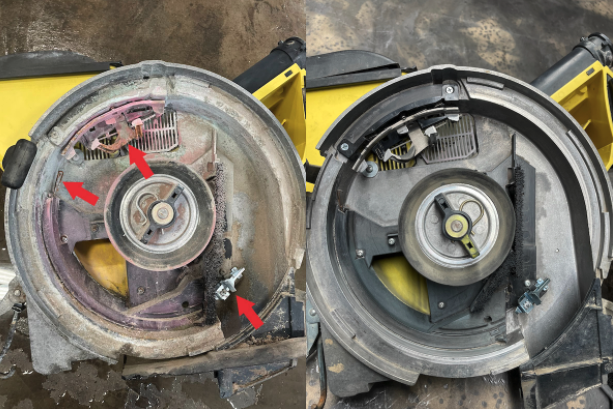Learning from Ag’s Technical Revolution
The only thing creating more buzz than talk of a technical revolution in agriculture is a swarm of June mosquitos at dusk. And for many of us that have tried to implement some of the earliest versions of some of those technologies, it can be just as infuriating.
But this season on our farm, we saw a glimpse of the potential of these technologies. And we’re excited that they will soon provide data which when acted upon, will make real differences in our yields.
For a number of years, we have spread urea “hot streaks” on all the corn fields on our farm in an effort to compare parts of the field where we know nitrogen is not limited to the rest of the field as a check on our fertility program.
We have looked for these “hot streak” strips on UAV photos, on the ground and with yield maps, but have never been able to find any real differences. This year all that changed.
Three things that drove those changes:
- We added software to our spreading tractor that allowed us to capture the GPS coordinates of the “hot streaks.” This allowed us to overlay those streaks on our yield maps.
- We changed from an OEM yield monitor to Precision Planting’s YieldSense monitor. The greater accuracy and better precision gave us much better data to analyze.
- We began using SMS and Ag Data Viewer software to statistically analyze the data we generated.
So what did we learn?
We learned that on several of our heavy clay fields, much of the damage we attributed to weakened corn plants from excessive spring rains, was actually nitrogen deficiency caused by denitrification. We showed a 20 bushel increase in our “hot streaks” in those fields and we believe that a late application of nitrogen would have recovered that yield on several hundred acres on our farm in 2015. Even at today’s lower prices, 20 bushels per acre is real money!
Interestingly, we did not see those differences on our tiled fields. That tells me that the better drainage in those fields prevented the anaerobic activity that depleted the nitrogen on the non-tiled ground. And it tells me much of the yield bump we saw on our tiled ground in 2015 can be attributed to less nitrogen loss there.
So how will what we learned change what we do?
Next year we will again put the nitrogen “hot streaks” in each of our corn fields. We will be certain to log them so we can capture them in our analytical software.
We plan to reduce our preplant nitrogen application by about 40#/acre. If we have a late spring or a poor start to the growing season, we will keep that money in our pocket—with today’s lower prices, we need to watch our expenses.
If we have a more favorable season or if tests show significant denitrification, we plan to side-dress or make a late season application of nitrogen. On our heavy soils around Prosper, it is often impossible to make a traditional side-dress application in a timely fashion so we will plan a surface application of 28% using 360 Yield Center’s Y-DROP adapter. This should give us enough time to determine the need and make the application.
We will be extensively testing one of the crop modeling nitrogen managers. ClimatePro (not yet available in our region), Encirca, and 360 Yield Center are the three most advanced programs. We tried 360 Yield Center towards the end of the 2014 season, and it seems the best fit for our farm.
None of these systems is foolproof or perfect, but all of them provided guidance that can help us fine tune our nitrogen program.
These nitrogen management tools will help us save nitrogen and increase our yields.
And we will continue to work with new tools, looking for data that is actionable through satellite photos, drones, probabilistic weather models and all the other wondrous technologies currently on the horizon.
None of this stuff is simple. None of it is particularly easy to learn. But especially in times of lower commodity prices, we need to coax every possible bushel from each of our fields.
2015 will mark my 35th cropping season. We have seen a lot of changes over those years. But I expect even greater change in the seasons I have left. And I can’t wait!



